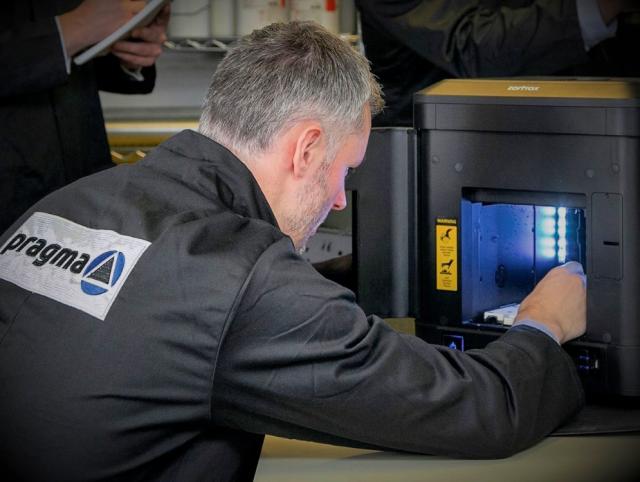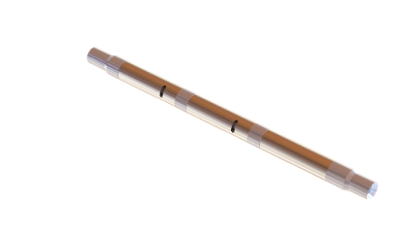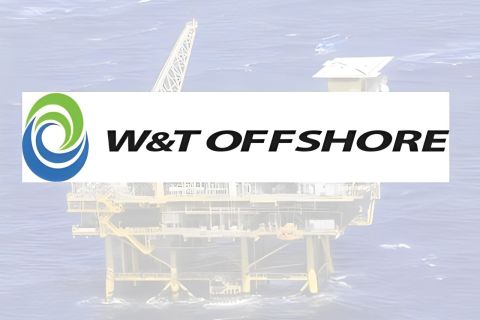
Advanced engineering can deliver valuable safety and efficiency gains for the industry. (Source: Pragma Well Technology)
[Editor's note: This story originally appeared in the January 2020 edition of E&P. Subscribe to the magazine here.]
As oil and gas operators strive to optimize production in mature and marginal fields, innovative technology is essential to enhance recovery and deliver improved economic benefits.
Electric submersible pumps (ESPs) are increasingly used as an efficient and reliable method for artificially lifting high volumes of fluids from wellbores. Traditional ESP systems need to run as part of the tubing or on coiled tubing, with the motor located at the bottom of the borehole assembly. The pumps can be configured to suit the individual production and wellbore characteristics of the reservoir to control and enhance the uplift of oil.
More recently, slimline cable-deployed ESPs have been developed that provide cost- and time-efficient retrofittable solutions. By eliminating the requirement for a rig, opex is drastically reduced, particularly offshore. However, these retrofittable solutions often mean the existing subsurface safety valve (SSSV) within the well is rendered inoperable, so an alternative solution is required.
Pragma Well Technology is developing an advanced downhole safety valve to create an improved well control tool for cable-deployed ESPs retrofitted to production wells. This new ESP safety valve enables onshore and offshore installations to meet all safety regulations while simplifying deployment and retrieval operations.
New challenges
In many regions, an API 14A qualified SSSV is a legal requirement for producing wells. These safety devices are installed in the upper wellbore to provide containment of well fluids in the event of an emergency. These valves generally use a flapper-style mechanism and are incorporated in the production tubing during completion.
Traditional rig-deployed ESPs are run in-hole along with the production tubing. Their control lines run outside the tubing in the annulus, so a safety valve can be placed above the device to provide an unimpeded seal within the tubing.
However, when an ESP is retrofitted to a well, without the use of a rig and without replacing the production tubing, the ESP control lines and conveyance cable must run through the inside of the tubing. This obstructs the existing flapper-style SSSV, therefore creating the requirement for an additional safety valve.
Currently, operators can resolve this by installing a modified valve into the profile of the existing one, with the old SSSV control line used to actuate the new valve. However, these options are limited to wells with wireline retrievable safety valve nipple profiles with associated control lines and as such are not without drawbacks.
The new valve must be dropped precisely into the insert profile and requires additional surface equipment for installation. It generally requires several time-consuming processes to ensure effective deployment and relies on the integrity of the existing seal profile and valve control lines, which may have been in situ for more than 10 years. Pitting or corrosion is fairly common, which can reduce the reliability of the seal and overall safety.
Flexible and cost-saving design
Pragma’s advanced ESP safety valve has been designed specifically for retrofitted ESPs and sits below the pump. It removes any reliance on the existing SSSV, its seals or control lines, delivering a fit-for-purpose safety tool.
Providing greater flexibility for operators, the valve can be deployed in varying configurations to suit the existing well setup. It can be run as an integrated part of the lower ESP assembly to be deployed and retrieved in the same run through the production tubing, thereby reducing installation time. Alternatively, it can be installed separately between running the seal bore packer and the borehole ESP assembly, depending on the operator’s preference.

Novel technology
Unlike other safety valves, instead of electric or hydraulic control lines, this device uses a novel method of differential pressure (fluid lift) to open and close it. This pressure differential is created when the ESP is operational and is lifting fluid through the wellbore. Therefore, the valve opens when the ESP is pumping and closes when it stops.
As it requires no pressurized chambers, hydraulic control lines or electrical power, this design safeguards reliability. It has a fail-safe closing mechanism when the ESP is switched off and can be opened and closed as many times as required. The retrievable technology also can be applied to other artificial lift systems including capillary strings, gas-lift velocity strings, progressive cavity pump and jet pump systems.
The standard model has a temperature rating of 120 C, and a high-temperature version rated to 170 C for harsher environments is being developed. As an added assurance to the operator, the valve can be tested in-hole via an inflow test to confirm that it holds pressure when shut. Additionally, the valve can be configured to allow a pressure test from above once installed but also facilitates pump-through capability.
Created using new and enhanced materials and methods, including additive manufacturing, the ESP safety valve is available in size variants for both 3.5-in. and 4.5-in. production tubing, providing a compact, cost-effective solution. The design and small wellsite footprint provide greater safety and reliability assurances to the operator as well as lowers installation, operation and retrieval costs. The ESP safety valve technology has been developed in-house with a number of tests already conducted and will be API 14A qualified.
Adapting to change
As the oil and gas industry continues to seek new technologies to enhance existing equipment, it is vital that the supply chain continues to adapt. By investing in critical R&D, there are significant opportunities to reduce costs and optimize production.
Have a story idea for Tech Watch? This feature highlights leading-edge technology that has the potential to eventually address real-life upstream challenges. Submit your story ideas to Executive Editor Jennifer Presley at jpresley@hartenergy.com.
Recommended Reading
Hess Corp. Boosts Bakken Output, Drilling Ahead of Chevron Merger
2024-01-31 - Hess Corp. increased its drilling activity and output from the Bakken play of North Dakota during the fourth quarter, the E&P reported in its latest earnings.
Will the Ends Justify the Means for W&T Offshore?
2024-03-11 - After several acquisitions toward the end of 2023, W&T Offshore executives say the offshore E&P is poised for a bounce-back year in 2024.
CEO: Coterra ‘Deeply Curious’ on M&A Amid E&P Consolidation Wave
2024-02-26 - Coterra Energy has yet to get in on the large-scale M&A wave sweeping across the Lower 48—but CEO Tom Jorden said Coterra is keeping an eye on acquisition opportunities.
Some Payne, But Mostly Gain for H&P in Q4 2023
2024-01-31 - Helmerich & Payne’s revenue grew internationally and in North America but declined in the Gulf of Mexico compared to the previous quarter.
TechnipFMC Eyes $30B in Subsea Orders by 2025
2024-02-23 - TechnipFMC is capitalizing on an industry shift in spending to offshore projects from land projects.





